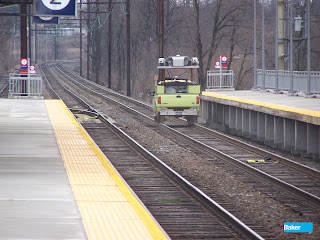Mobile LiDAR is not all fun and games, but it does feel like it some days.
What could be more enjoyable than mounting a couple lasers on top of a 4 wheel drive SUV, cruising at highway speeds, shooting it at everything that the eye can see and calling it work? It’s a career that would have Tim “The Toolman” Taylor stand-up and say “more power, ARGH, ARGH, ARGH”, (although our system is manufactured by Optech, not Binford). How about adapting it to fit a boat, an all-terrain vehicle or a hi-rail? Now we’re talking… it’s like a sophisticated NextGen video game that would make my twelve year old son envious. In this context, it’s easy to forget that the laser is a highly advanced optical imaging system, operated by experienced survey technicians, which is used to collect vast amounts of precision data for a multitude of real world applications. If engineered correctly, a Mobile LiDAR unit will serve as a cost-effective survey grade solution that can be used to generate high quality project deliverables in a surprisingly quick timeframe. This is where the fun stops and the real work starts.
 |
Baker's Mobile LiDAR unit is mounted on a Hi-Rail equipped truck
to perform a collection on a railroad corridor. |
The implementation of a mobile LiDAR project can often be a rigorous undertaking, sometimes involving hurdles that would challenge the greatest of the world's Olympic sprinters. First and foremost is the sale. You would think that the system’s efficiency, accuracy and safety features would enable the technology to sell itself, but the resistance to change innate in economic buyers sometimes results in the need for the “hard sell”.
There’s hardware and software configuration, system calibration, survey control, and pre and post processing procedures that must be painstakingly followed to ensure a quality data output. And let’s not forget the logistics of scheduling… Mother Nature is not always the most forgiving of patrons. Mobile LiDAR data collections are serious business. However, if managed properly, it might just give four wheeling on a muddy summer day in the bayou a proverbial run for its money in the fun and games category.
Got LiDAR?
Cheers!
David
David Fekete is GIT Operations Manager for our Harrisburg, PA office. He joins other manager's within Baker's GIT Service Area as a guest author to the blog. In the coming weeks, additional guest authors will continue providing content from a different perspective.

























